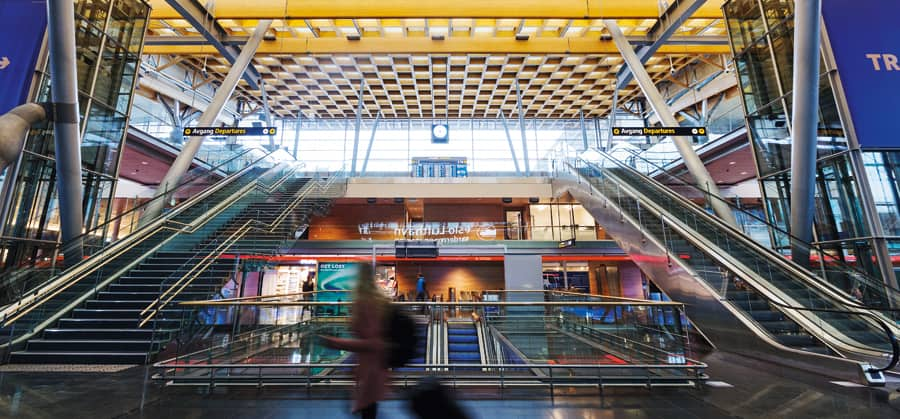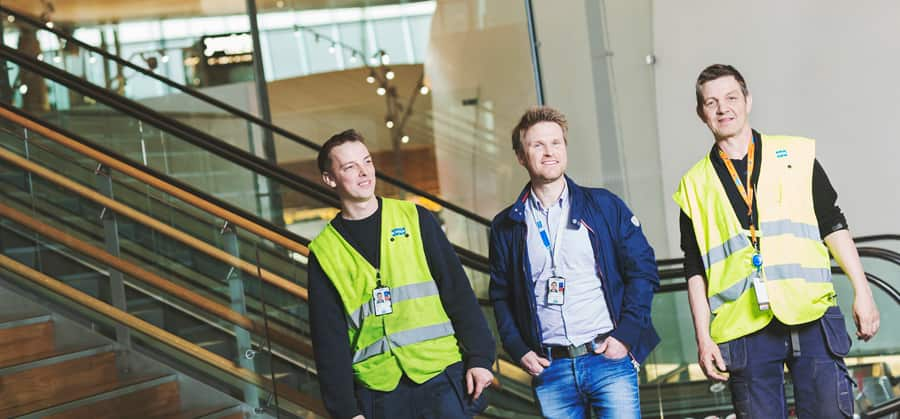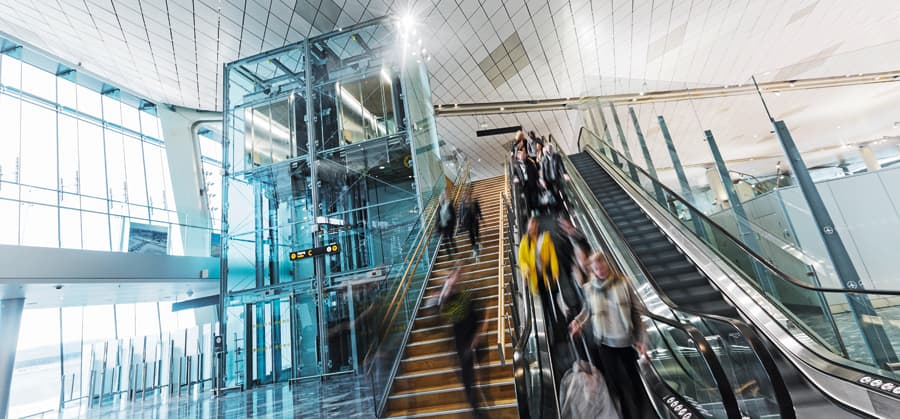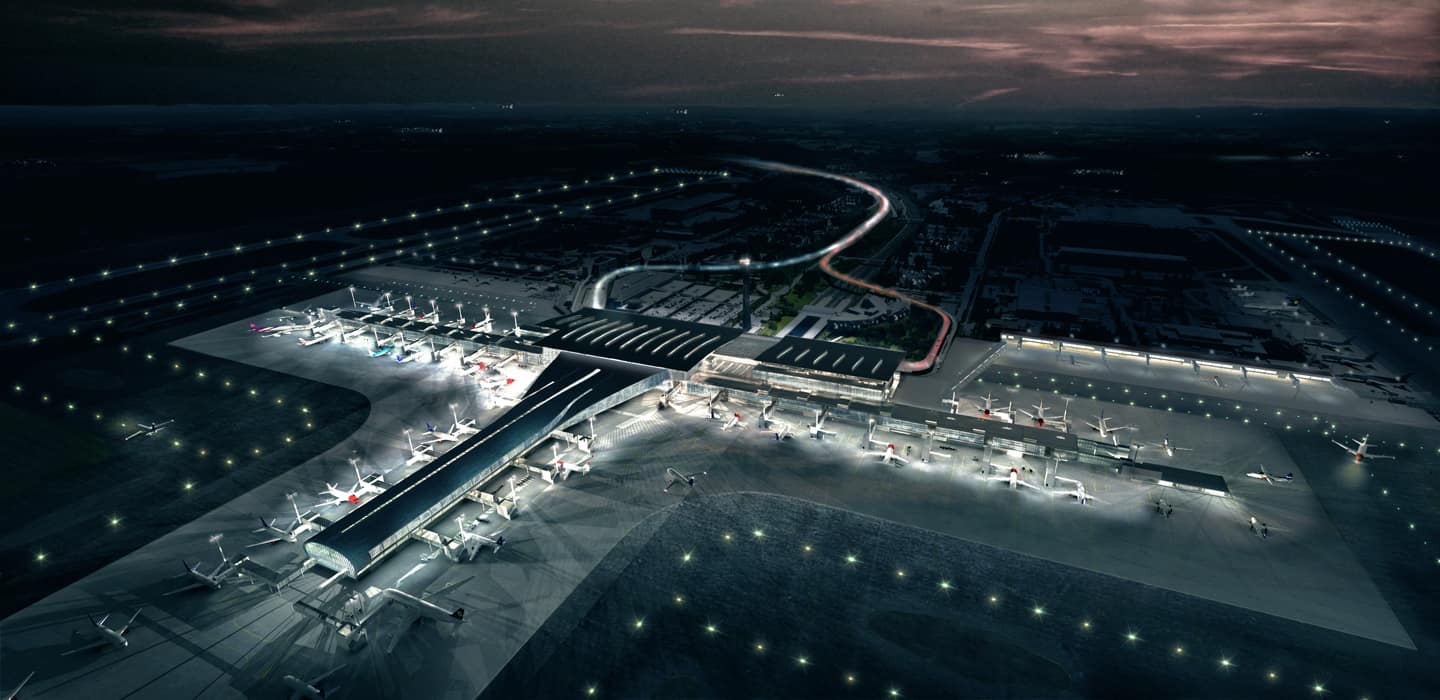Are you interested in KONE as a corporate business or a career opportunity?
Corporate site
Text: Ronak Kotecha
Is it a mall? A cinema hall? Maybe even a spa or health care center? These are the questions that are sure to come to mind when you see a modern airport for the first time.
“Airports are the first and the last impression of any country,” declares Bjørn Olav Susæg, architect of the Oslo International Airport – one of the busiest airports in Europe, which has seen passenger traffic grow steadily over the years. Almost 26 million passengers travelled through the airport in 2016, and an ongoing expansion will see capacities increase to handle 28 million passengers in phase 1 and a whopping 35 million in phase 2.
This massive expansion is only natural considering the pace at which the aviation industry is growing. The prevalence of low-cost carriers has seen an increasing number of people take to the skies, and today’s traveler often ends up spending more time at the airport than in the aircraft itself. In such a scenario, it is crucial to keep passengers comfortable, occupied and secure, all factors that are major considerations in the Oslo airport’s expansion.
Improving airport people flow

The expansion was by no means an easy task, and called for collaboration from all stakeholders invested in the project. One of the main tasks was to figure out ways to help people travel safely and comfortably, right from the time they entered the airport to the time they took off and vice versa.
A particularly challenging task, considering that the Oslo airport is one of the most ambitious transport hubs in Europe. But since we were actively involved in the project right from the start, we were up for the challenge. A crack team with experts from different departments across geographies was quickly put together to come up with radical ideas for the airport’s modernization.
In any airport, efficiency of operations and security are right at the top of the list of priorities and the Oslo airport was no exception.
“With regards to infrastructure, the Oslo airport project had the strictest requirements regarding environment and space efficiency,” recalls Tor Engen, project manager at KONE Norway.
Installing space-saving solutions
For instance, all elevators including the large goods elevators in the airport had to be built without machine rooms. This was a valuable space-saving measure, one which we handled easily with our range of TranSys™ and MonoSpace™ elevators, designed to function without dedicated machine rooms.
This was in sync with the architect’s vision, which was to have clarity, comfort and open flexible spaces. “Just like a city masterplan, we work a lot with dimensional criteria and try to keep distances to a minimum,” reveals Susæg, adding that compact buildings are more sustainable and easier to navigate.
The idea was to build small but enough – a trait that is generously displayed at the Oslo airport that is almost half the size of other airports yet handles the same volume of traffic. “Bigger isn’t always better,” he quips matter-of-factly, adding that passengers should be made to feel safe and not isolated in a huge space.
And to aid this vision came a wide variety of People Flow solutions that include elevators, escalators, an autowalk and more, all strategically placed and easy to use.
“Our solutions not only met all demands from a specifications and design perspective, but also fulfilled all the requirements for safety, maintenance and regulation. We had the highest project certifications, including the likes of BREEAM, which is one of the most significant environment assessment methods across the globe,” declares Engen. “Right from the start, our focus was to find sustainable solutions for the future,” he adds.
Keeping things eco-friendly

Environmentally, the Oslo airport has made massive strides in keeping energy levels low. Among the many ground-breaking innovations used in the airport, adds Susæg, is a ‘Snow Depot’ to keep it cool.
“They are used to maintain low temperatures and bring in cool air, thus cutting down the use of energy. Further, to reduce the CO2 footprint, ash has been added into the concrete and wood for cladding the roof,” he explains.
We too used ground-breaking technology to maximize energy efficiency. Technology such as the regenerative drive that converts an elevator’s excess energy into electricity, which can then be reused elsewhere in the building. Very unlike conventional drives, which convert energy into heat that must be removed by air conditioning systems.
Besides these, other improvements we made included the use of LED lights in elevators that reduce energy consumption by up to 80% as against halogen lights and last 10 times longer. What’s more, as much as 90% of the material content of our elevators consists of metals that can be recycled at the end of the product’s life cycle.
But all of this is just the beginning. As the Oslo airport readies itself to expand further, it’s time to fasten your seat belts for a ride into a jet-setting future.

